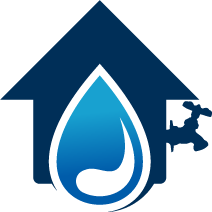The Ins And Outs Of Pipe Lining
ShareIn modern construction and infrastructure maintenance, pipe lining has emerged as a revolutionary technique that offers cost-effective and sustainable solutions. Whether rehabilitating existing structures or implementing pipe lining systems in new construction, this method provides numerous benefits for a wide range of projects.
What Is Pipe Lining?
Pipe lining is an innovative process used to restore and enhance the functionality of pipes without the need for extensive excavation or replacement. It involves applying an epoxy resin liner to the interior surface of pipes through air inversion or pull-through techniques. This liner creates a new smooth inner layer that reinforces structural integrity while preventing leaks, corrosion, and blockages.
Pipe lining offers several key benefits, making it an attractive choice for infrastructure rehabilitation projects. It significantly reduces costs by eliminating the need for extensive excavation and pipe replacement. Additionally, this technique minimizes disruptions to surrounding areas during construction while ensuring minimal impact on traffic flow.
What Are The Steps Involved In Implementing Pipe Lining In New Construction?
Thorough planning and assessment are vital before implementing pipe lining in new construction. Engineers and contractors must evaluate the project's requirements, consider suitable pipe lining materials, and assess potential challenges or limitations.
Once the planning phase is complete, the installation process begins. This involves preparing the pipes for lining by cleaning them thoroughly to ensure proper adhesion of the epoxy resin liner. After installation, a comprehensive inspection ensures the lined pipes meet quality standards. This includes testing for leaks, structural integrity, and flow capacity.
Can Existing Structures Be Retrofitted With Pipe Lining Systems?
Before considering retrofitting, engineers must assess the feasibility of implementing pipe lining systems within existing structures. Factors such as the condition of the pipes, accessibility, and compatibility of materials are carefully evaluated. Unfortunately, pipes in difficult-to-reach areas may require the removal of sections of walls or floors to provide access.
Retrofitting with pipe lining systems can offer significant cost savings compared to traditional replacement methods. It eliminates the need for extensive excavation and reduces labor time while extending the lifespan of existing infrastructure. These benefits can more than offset the initial costs of lining pipes. In fact, these benefits can lead to homeowners wanting to make this upgrade proactively to reduce the risk of future plumbing problems with their properties.
Retrofitting existing structures with pipe lining systems has minimal impact on building functionality. The new epoxy resin liner reinforces structural integrity without altering interior spaces or disrupting day-to-day operations. Additionally, it extends the longevity and reliability of aging piping systems.
Contact a local company to learn more about pipe lining.

